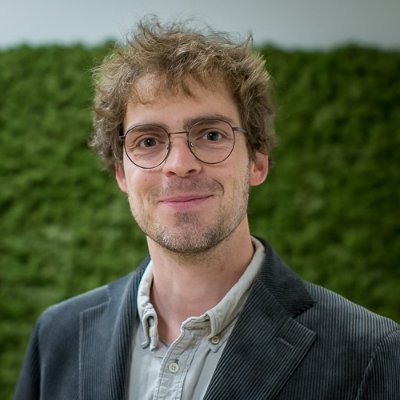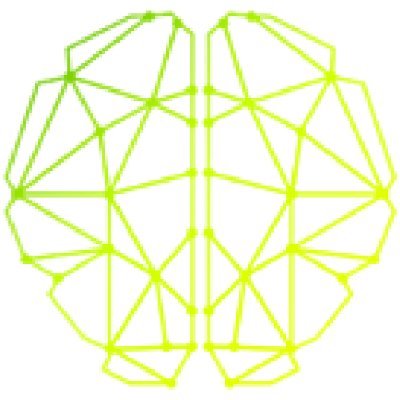
Alex Silva
@asilvaalex1
Followers
128
Following
129
Media
0
Statuses
20
MD/PhD candidate in the @ChangLabUcsf studying brain computer interface, speech, and epilepsy
Joined June 2023
Excited to share our recent work towards creating a high-performance and expressive neuroprosthesis for speech decoding! Grateful to work with such a great team! None of this would be possible without the dedication of our participants https://t.co/AA4ccOpjSc
nature.com
Nature - A study using high-density surface recordings of the speech cortex in a person with limb and vocal paralysis demonstrates real-time decoding of brain activity into text, speech sounds and...
1
1
15
Excited to share our latest work, developing speech neuroprostheses that are highly specific to volitional speech attempts by the user!
Check out our latest work developing speech decoding systems that maintain their specificity to volitional speech attempts, co-led by @asilvaalex1 and @jessierliu
1
0
12
Our latest research on the neural basis of speech-motor sequencing is now published in @NatureHumBehav! Check out this high-level explainer video and read the full paper here:
nature.com
Nature Human Behaviour - Liu et al. examine the role of sustained neural activity in the planning and production of speech sequences, revealing a key role for the middle precentral gyrus.
New in @NatureHumBehav, @jessierliu, Lingyun Zhao, PhD & @ChangLabUCSF show that the middle precentral gyrus coordinates the muscle movements required to speak, challenging the longstanding view that Broca's area controls this process: https://t.co/NS0WpDVuuV
0
9
49
1/n) Our latest work is out today in @NatureNeuro! We developed a streaming “brain-to-voice” neuroprosthesis which restores naturalistic, fluent, intelligible speech to a person who has paralysis. https://t.co/EAk1Wz25TH
nature.com
Nature Neuroscience - Naturalistic communication is an aim for neuroprostheses. Here the authors present a neuroprosthesis that restores the voice of a paralyzed person simultaneously with their...
31
183
704
Momentary snapshots of hippocampal brain activity may provide daily seizure forecasts in epilepsy @UCSFEpilepsy, @NeurosurgUCSF, @ANKhambhati, @ChangLabUCSF #seizurecycles, #epilepsy
https://t.co/Qicm8RAhZ9
nature.com
Nature Medicine - Momentary snapshots of hippocampal brain activity may provide daily seizure forecasts in epilepsy.
1
12
21
For the first time, a brain implant has helped a bilingual person who is unable to articulate words to communicate in both of his languages
6
85
233
Very excited to see our work on developing a bilingual speech neuroprosthesis out today in @natBME ! Thanks to our dedicated participant “Pancho” for making this happen! We put together a summary of the results below
Excited to share our work on developing a bilingual speech neuroprosthesis that decodes cortical activity into English and Spanish sentences in a person with paralysis. Out today in @natBME!
0
5
27
Excited to share our review on progress towards a clinically viable speech neuroprosthesis! Thanks to @ChangLabUcsf and co-authors @KayloLittlejohn , @jessierliu , and @AtDavidMoses ! https://t.co/NuBP80Ufh4
nature.com
Nature Reviews Neuroscience - A clinically viable speech neuroprosthesis could restore natural speech to individuals with vocal-tract paralysis. In this Review, Silva et al. discuss rapid progress...
0
12
43
Check out @sarah_wandelt study on imagined speech decoding from Utah array's in SMG: https://t.co/HCAMpiOtG1
nature.com
Nature Human Behaviour - Wandelt et al. describe a brain–machine interface that captures intracortical neural activity during internal speech (words said within the mind with no associated...
1
2
22
Big thanks to my mentor Dr. Chang and @AANSNeuro for the chance to present our work on speech brain-computer interfaces! Great to meet more of the neurosurgery community #AANS2024
.@ChangLabUcsf member @asilvaalex1 presenting on the use of brain computer interfaces to restore speech in people with paralysis. #AANS2024 #WhatMatters2Me
0
2
21
ecstatic to see this paper out! made possible through extraordinary teamwork, and special co-first duo with @matt_k_leonard. an astounding first insight into what Neuropixels can tell us about neural computation in human cortex, in support of language processing
We’re excited about our first paper looking at speech encoding in single neurons across the depth of human cortex. Out today in @nature! https://t.co/RyX8gzSwjI [1/6]
5
16
114
Our work on decoding speech using high-density micro-scale recordings was published today in @NatureComms! We demonstrate the potential of high-spatial sampling technology for future neural speech prostheses. https://t.co/gb3UjJs4Pc The thread below outlines our main findings.
nature.com
Nature Communications - Previous work has shown speech decoding in the human brain for the development of neural speech prostheses. Here the authors show that high density µECoG electrodes can...
3
16
80
Excited to share recent work with @UCSFepilepsy as well as the Kleen and Chang labs! We found that interictal discharges form a convergent basis for word-finding difficulty in patients with epilepsy https://t.co/aB8fAhpfxV
0
1
9
Our new study on decoding navigational features from hippocampal recordings just appeared online: https://t.co/jy9M5qKB18
2
4
34
🎙️ ON AIR: We're speaking w/ @UCSF_BTS's Alex Silva & @UCBerkeleyNeuro's Robert Knight about the promise of neuroprosthetics. ❓ What are your questions about the future of brain-computer interfaces? 📻 Listen:
kqed.org
Researchers at UCSF have developed a digital avatar to convey the words and facial expressions of a woman with severe paralysis by transmitting her brain activity. They published their results a...
1
3
7
Check out the two amazing speech BCI studies, in patients that are not able to speak anymore, published in @Nature today: https://t.co/6JeqeRGGtC
https://t.co/Rfg2UiIfFM These studies really push the state of the art and bring clear benefit to patients. What an exciting time!
4
31
134
















